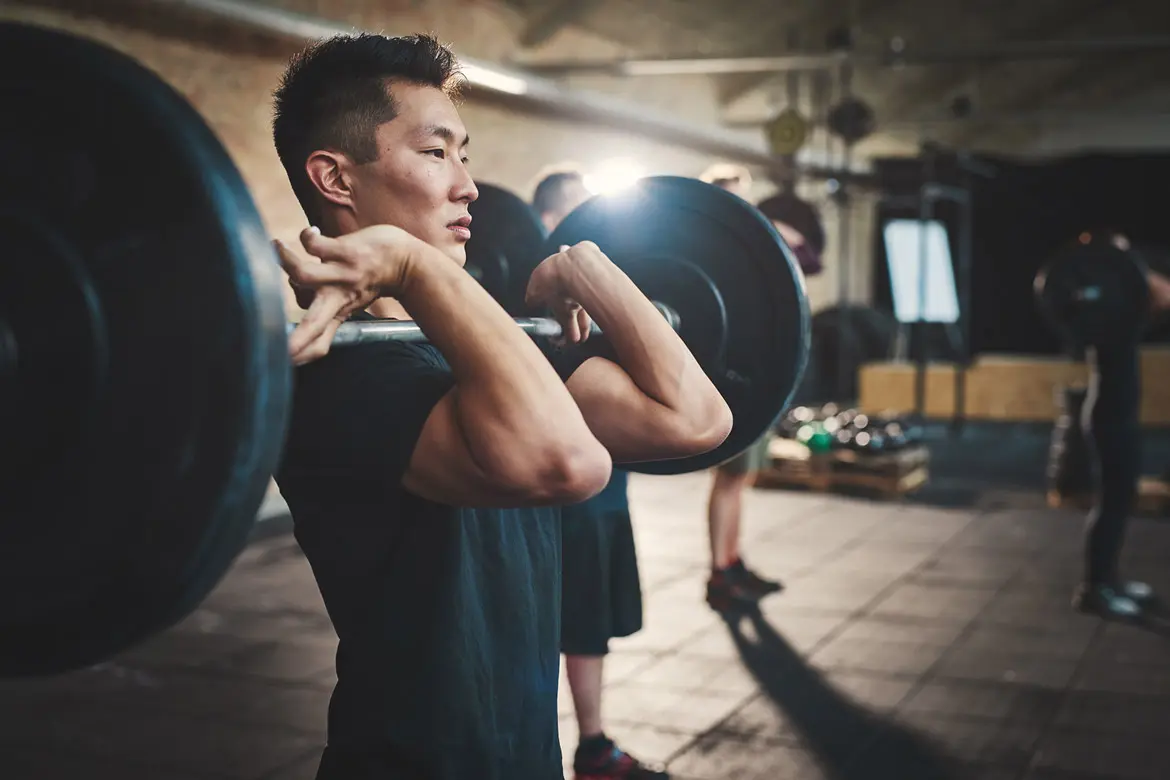Dr Wee Teck Huat Andy
Orthopaedic Surgeon


Source: Shutterstock
Orthopaedic Surgeon
We've all heard the saying 'no pain, no gain' but a CrossFit enthusiast may disagree.
If you're out of shape, exercising may be uncomfortable for a while, and you'll feel some aches as you use muscles that aren't used to the work. But exercising shouldn't be painful. Working through the pain when you have an injury is a bad idea, so you should know how to tell when the pain you are feeling is an injury, and when it is just soreness.
Muscle soreness: When you exercise, you may feel muscular soreness 24 – 72 hours later. This is called delayed onset muscular soreness (DOMS) and is caused by small, safe damage to muscle fibres. Movement may be uncomfortable, but stretching the affected muscles should decrease soreness. After a few days, the soreness will be completely gone.
Pain from injury: Unlike DOMS, pain from an injury will occur while or soon after performing an exercise. This pain may be sharp. If it doesn't disappear after a few days, even after resting the affected muscles, it's pretty conclusive you have injured yourself. Pushing through the pain to continue exercise can worsen the injury. If it doesn't resolve within a week of rest, consult a doctor.
CrossFit is a comprehensive workout method that brings together different elements of physical fitness including aerobics, strength training, core building and balancing exercises. Workouts differ daily and typically take 60 minutes.
Here are some typical injuries arising from CrossFit exercises:
Tennis elbow, or lateral epicondylitis, is not only caused by playing tennis, but also from strain from repetitive movements. It is common in CrossFitters because the exercise regimen is often a series of repetitive movements.
What will I feel?
What should I do?
Stop your current activity until the pain goes away. Try stretches aimed at the extensor muscles, and use a compression elbow brace to minimise micro-tears in muscles.
Achilles tendonitis is an overuse injury of the Achilles tendon, the band of tissue that connects calf muscles at the back of the lower leg to your heel bone. You may experience this painful injury from doing too many high box jumps.
What will I feel?
You'll feel a mild ache in the back of the leg or above the heel after exercise. More severe pain may occur after prolonged running, stair climbing or sprinting.
What should I do?
In most cases, rest is required at home under your doctor's supervision. Self-care strategies are usually necessary to prevent recurring episodes. Proper stretching and strengthening of the calf muscle are especially helpful.
Try heel inserts in your training shoes to prevent stress on the area. More serious cases of Achilles tendonitis can lead to tendon tears (ruptures) that may require surgical repair.
The rotator cuff is a group of muscles and tendons that surround the shoulder joint, keeping the head of your upper arm bone firmly within the shoulder socket. Rotator cuff injuries occur most often in people who repeatedly perform overhead motions in their jobs or sports. CrossFitters may overdo 'clean and jerk' exercises and overhead presses, leading to rotator cuff tendonitis.
What may I experience?
What should I do?
Rest, apply ice and massage the area. Let the shoulder heal before doing exercises likely to cause rotator cuff tendonitis. Otherwise, you may end up with a very serious injury that requires surgery, or you may find yourself with a limited range of motion around the shoulder – for life.
De Quervain’s tenosynovitis is a painful condition affecting the tendons on the thumb side of your wrist and causes pain when the tendons are inflamed. While it is more common in women, the exact cause isn't known, and any activity that relies on repetitive hand or wrist movement can make it worse. CrossFitters may experience greater pain with kettlebell and barbell exercises.
What will I feel?
If you leave it too long before seeking treatment, the pain may spread further into your thumb, forearm or both.
What should I do?
When you push your body beyond its limits, you may experience lower back pain. This happens because you're not able to stabilise using your core muscles during athletic activities. Athletes and CrossFitters with lower back pain are often known to experience it when performing squats or overhead presses.
Don't ignore this pain and attempt to push through it as it will be harder to heal. While rehabilitation can help decrease your discomfort, the best way to treat lower back pain is to avoid it all together. To prevent lower back pain, stabilise your core so your spine stays in the neutral zone.
What will I feel?
You'll feel a nagging pain that you think you can work through, but don’t be tempted to do so.
What should I do?
Do proper stretching and strengthening exercises to strengthen your core and the muscles that support your lower back. If you experience lower back pain, see your doctor for advice on suitable exercises you can do.
Avoid bed rest, and consider massage to treat muscle tension. If you experience numbness, pain, or tingling in the arms or legs, see a doctor. If you have loss of bladder control, seek immediate medical attention.
Your journey to get back to exercise after injury should be gradual and focused on strengthening your core under your doctor's supervision.